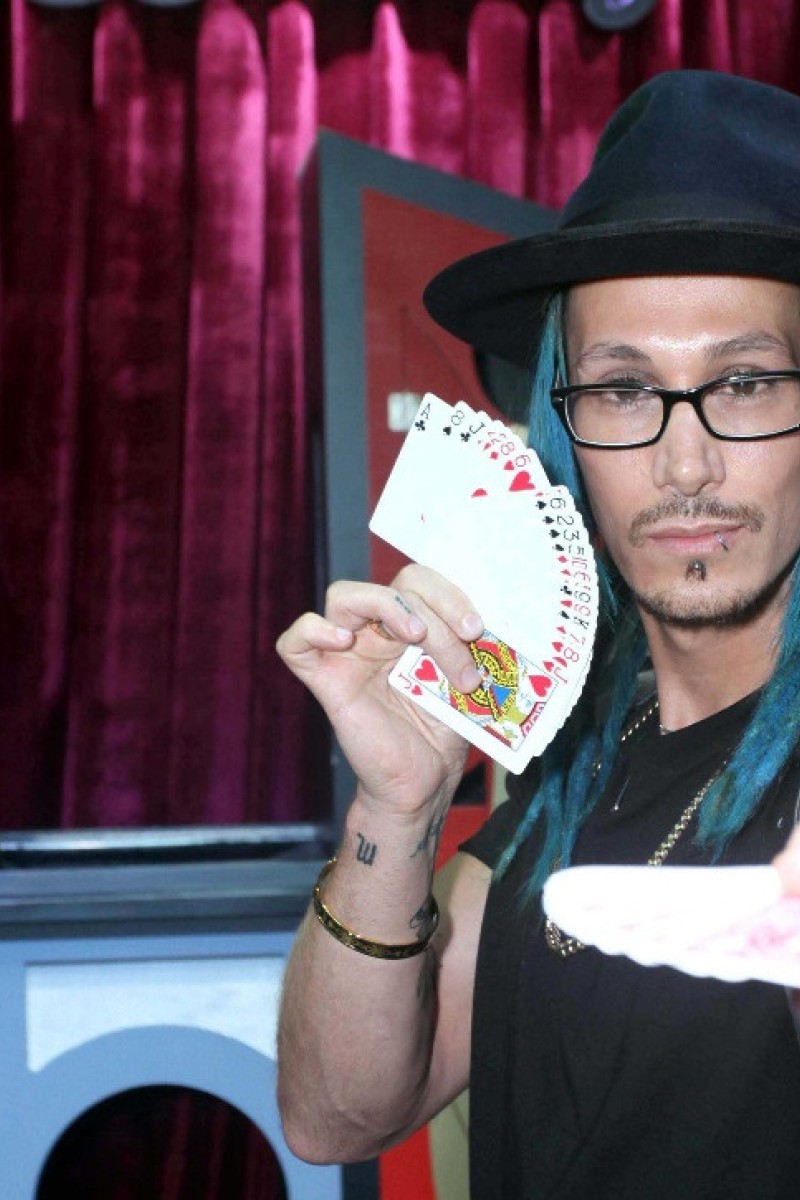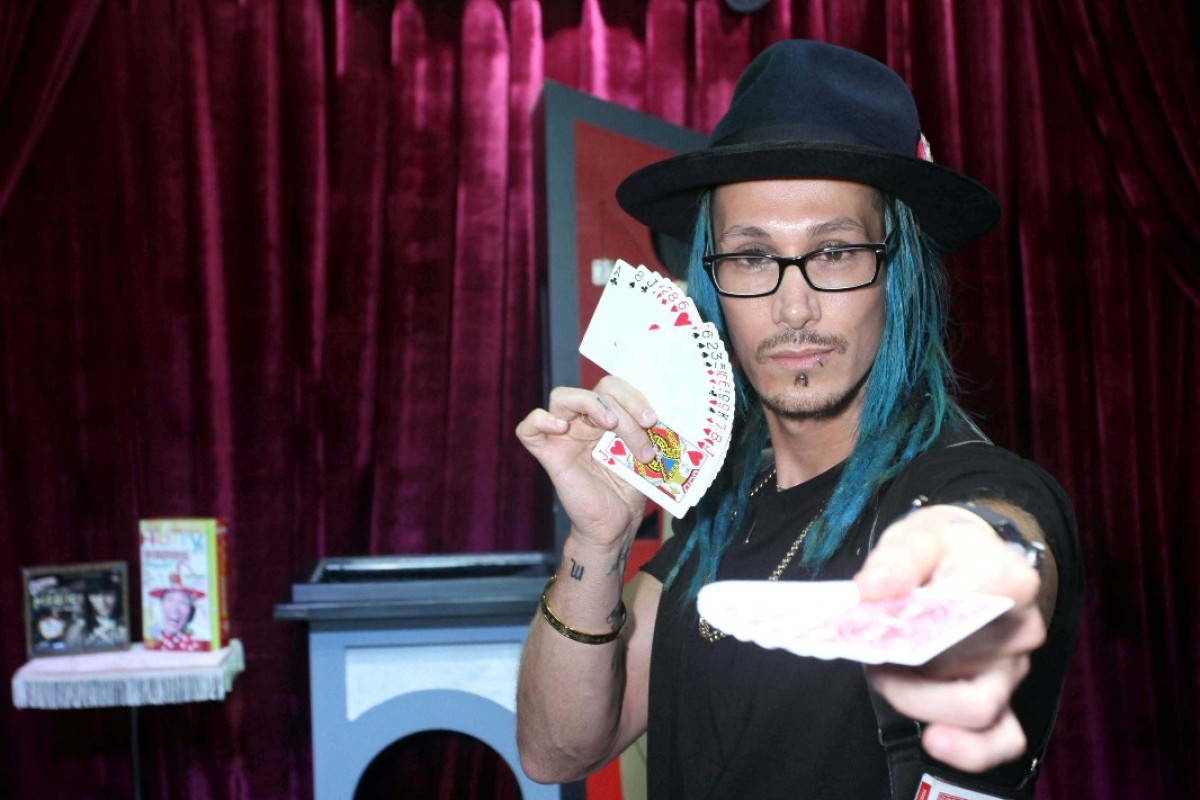
Magician Cosentino: The illusionist and escape artist reveals the secret to pulling off the perfect magic trick
The Australian magic man, who has performed on America’s Got Talent, overcame a tough childhood by going through magic books
 Cosentino is a successful magician who admires 19th century magicians such as Harry Houdini.
Cosentino is a successful magician who admires 19th century magicians such as Harry Houdini.No matter the journey you’re on, the first step is always the hardest. For Australian magician, illusionist and escapologist Paul Cosentino, following his passion was made even more challenging due to his early learning difficulties.
As he tells Young Post, his love of magic dates back to the days before there were any handy online guides or video tutorials. Instead, his interest was sparked after seeing pictures in magic books.
“Magic is not just about ‘here’s a cool trick, let me impress you’, it’s an education as well,” he says. “I had a lot of reading difficulties, so I learned to read using magic books.”
As a 12-year-old, Cosentino didn’t yet have the makings of a showman.
“I was, believe it or not, shy and introverted, with low self-esteem,” he says. “Magic gave me an escape, it boosted my confidence, but most of all, it helped me learn to read. And all of a sudden I had a skill that nobody else had.
“I was bullied at school; the teacher would ask me read out loud and I couldn’t do that,” he recalls. “They sent me to all these specialists and doctors, and they said I had something wrong with my hearing or I couldn’t see properly. I didn’t. I was just a really late learner. I wasn’t engaged.”
The images he was most drawn to in his magic books where the vintage posters of famous 19th century magicians like Harry Houdini, who remains a hero and an inspiration to Cosentino today.
“In the back of the book, there were magic tricks … my mother would read these tricks to me, and through this process of reading, analysing and physically applying it to my hands, I began to read. This is a process though, this doesn’t happen in a week.”
Now a successful magician, Cosentino has made TV appearances, won magic contests, and even landed a role in the Jackie Chan movie Bleeding Steel. But his very first audience was his family.
“I showed my father, who’s an engineer, my first trick; I made a coin disappear – very basic,” he recalls. “In my world, my father was my hero, and he said to me ‘How did you do it?’. From a shy kid who couldn’t read to one able to fool his father – that’s very powerful.”
This process of learning and perfecting inspired Cosentino’s new magic kit for beginners, a product which was showcased at the Hong Kong Toys and Games Fair in January. There are two versions, a larger one with 200 different tricks, and a smaller one with 30. Both focus on sleight of hand tricks, with props like balls, cups, cards and coins.
But buying a kit won’t make you an instant expert. “It’s far more than a toy. Magic is learned through practice and dedication, like any art form, whether it be piano or martial arts,” he says.
He explains that a stage illusion usually takes three months to plan, while an escape involves six months of full-time work by a whole team of people. “We’ll develop an illusion, draw it up, do a digital draft, make a structure, get it built, bring it back, then it doesn’t work and we rebuild bits and pieces and eventually we have an apparatus.”
After that, there’s costumes, choreography, lighting, and staging. “Three months pass, doing this every day. We put it on stage and it’s bad. And you start again,” he says. “You don’t know until you put it in front of an audience. Are they applauding where you want them to? Are they laughing? Are they shocked? You keep reworking it.”
He doesn’t mince his words when it comes to giving advice to aspiring magicians. “If you want be really good at it and want to be unique and different, it’s a lot of hard work,” he says. “You gotta be passionate about it. If you’re just doing it because you think it’s cool and you can pick up girls, you’re not going to last very long.”
Cosentino says the most important part of practising is performing in front of other people. “Once you’ve practised in front of your family and friends – who won’t be so judgemental – then you go out in the street and perform,” he says. “You learn very quickly what works and how to approach people. These skills have nothing to do with the magic. These are skills about how to talk to people and communicate. It’s about confidence.”
Edited by Charlotte Ames-Ettridge
You might also also:
Magic isn’t just all smoke and mirrors - it’s a real skill and art that takes hard work
Hong Kong magician reveals the secrets behind a captivating magic trick
No cheap tricks here: Louis Yan holds a magical workshop for Young Post JRs
